If you’re interested in the advantages of creating a B2B e-commerce website, then you’re looking to drive sales and increase your profits. However, when it comes to creating your storefront, you need to understand some significant differences between your customers and the typical B2C consumer.
B2B E-Commerce vs. B2C E-Commerce Website: What is the Difference?
Before diving into the advantages of a B2B e-commerce website, it is essential to understand that these websites are not built for the typical consumer. That’s because your audience isn’t a single customer or type of customer. Instead, your customers are of the business-to-business community, which means you provide goods and services to other businesses to help them reach their business goals.
So, what truly sets B2B and B2C e-commerce audiences apart?
- The size of your audience: B2B audiences are much narrower compared to B2C.
- The average B2B price point is much higher than that of a typical B2C consumer.
- B2B consumers use logic to make their decisions, whereas B2C consumers use emotion
- B2B consumers require more detailed, report-like B2B content that explains the benefits, whereas B2C consumers want testimonials and social proof.
In truth, there are likely dozens of other ways these two audiences are different. However, when it comes to the user experience, both audiences are the same. They expect to have a simple, personalized experience with little to no bumps in the road.
5 Advantages of a B2B E-Commerce Website
Understanding the differences between B2C and B2B e-commerce customers is an excellent start. With B2B e-commerce predicted to reach approximately $1.8 trillion in the U.S., more and more B2B marketing teams wonder whether or not they should invest in an e-commerce website. Still not quite sure yourself? Then you’ll want to make sure you are aware of these five advantages of having a B2B e-commerce website:
1. Save You Money and Resources
One of the best advantages of a B2B e-commerce site is that it can help you save money and other valuable resources. Not having a physical storefront can save you thousands of dollars in overhead costs, staffing costs, etc.
Even better, when you tie your e-commerce site into your website, then you can properly optimize it as well. This will help you organically draw in new leads, and if you build your site with the consumer in mind, you’ll be surprised at how well it does.
2. Allows You to Expand Your Customer Base Continuously
Optimization not only makes your website more visible but allows you to expand your customer base as well. Having a physical storefront is great for building your local SEO and building your local brand awareness. When you take your storefront and make it digital, you can reach an audience base you would never have locally.
3. Makes Collecting Data Much Easier
When you decide to go digital, it’s also worth noting that data collection becomes much more streamlined. Sure, traditional sales allow you to collect and analyze necessary data on customers, suppliers, etc. Digital sales takes all that information and compiles it into one convenient place.
4. Ease of Access
There is a common misconception that B2B customers don’t want to buy online. That couldn’t be more wrong. Reports state 73% of B2B buyers are millennials, and 85.9% of them prefer to shop online. They prefer this shopping method because it’s as simple as clicking on what you want, entering your payment information, and waiting for it to arrive at your office.
An e-commerce website makes the purchasing process easy for your consumers. They can find whatever they need with a few clicks of a button, and you can list all you have to offer just as easy.
5. Allows for Larger Order Values
One of the biggest advantages of having a B2B e-commerce site is that it allows for larger order values. You already know that B2B buyers tend to spend more than B2C buyers. With the average B2B transaction totaling approximately $491 per B2B buyer, having an e-commerce website is well worth the investment.
As a bonus, when it comes to the average conversion rate for a B2B e-commerce website, it’s worth noting that the B2B conversion rate falls around 10%, whereas B2C averages about 3%.
Establish a Seamless Digital Presence with the Help of CadenceSEO
To take full advantage of B2B e-commerce, you need to make sure that your e-commerce website fits seamlessly into your digital marketing strategy. If you’re not quite sure how to do that, then let the digital marketing professionals at CadenceSEO help!
If you’re ready to let our talented staff of digital marketing professionals help you with your digital marketing strategy, then contact us today!






